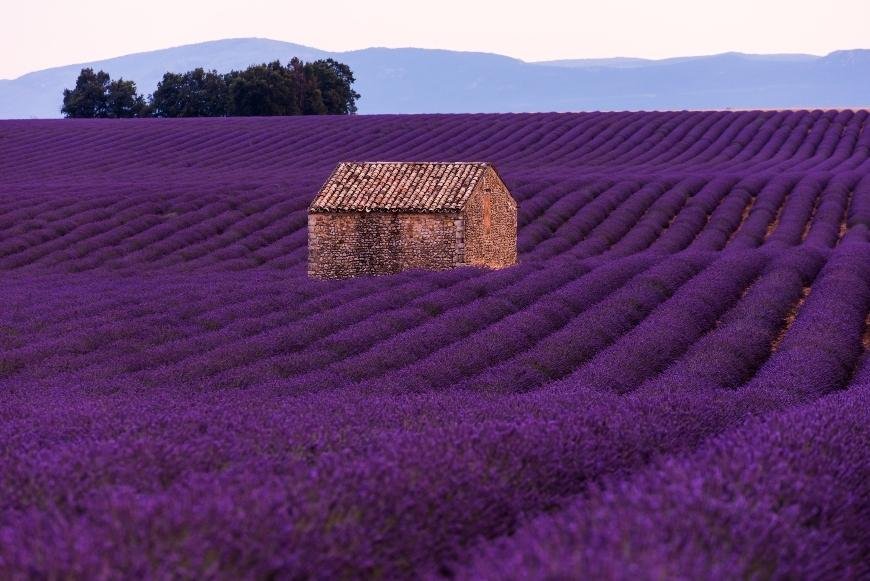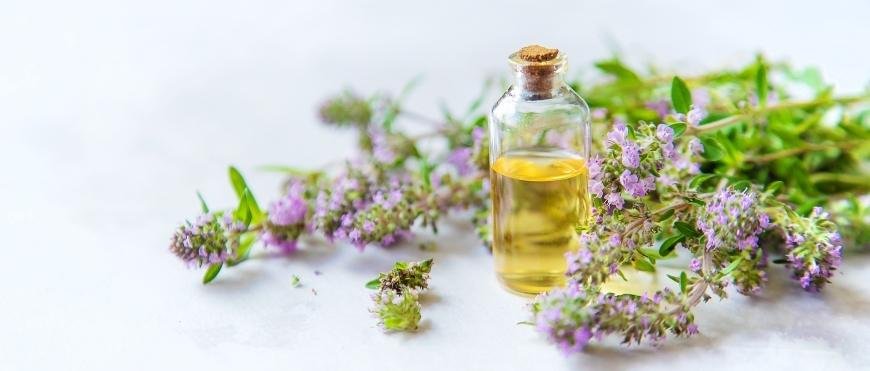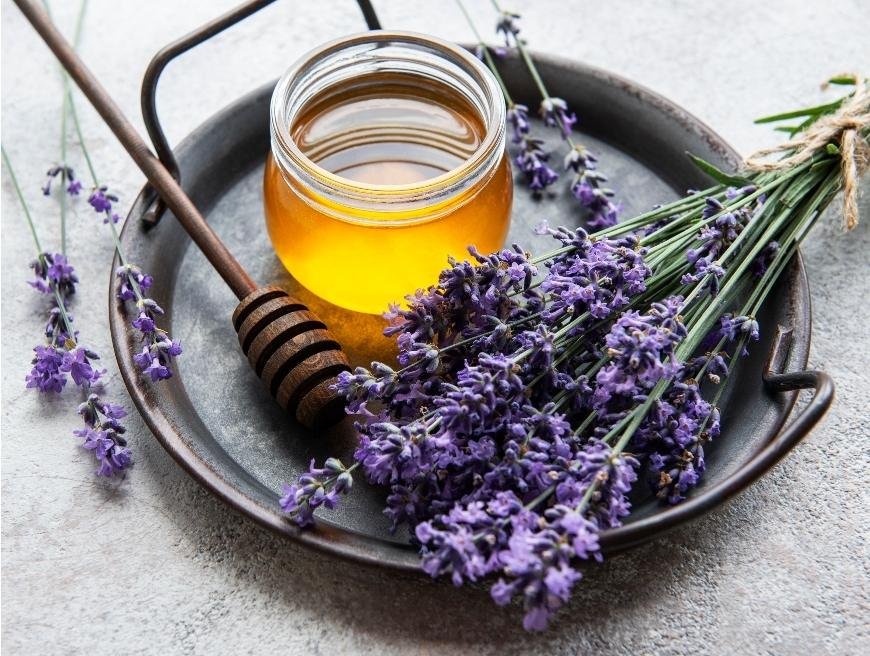What is Lavender
In this blog post, we will explore the captivating world of lavender - from its origins to its effects and uses.

What is Lavender? This captivating and versatile plant has a rich history and numerous applications that have intrigued people for centuries. In this blog post, we will explore the captivating world of lavender - from its origins to its effects and uses, as well as uncovering its historical significance in different cultures.
We'll uncover the historical significance of lavender in various cultures throughout time. Moreover, we will look into the potential advantages and drawbacks linked to lavender oil and fragrant healing methods.
As you continue reading, you'll gain insight into whether or not lavender is safe to use as well as discover creative ways to incorporate this essential oil into your daily life. So let's embark on this journey together to truly understand what is Lavender.
Table of Contents:
- What is Lavender?
- History of Lavender
- Effects of Lavender
- Side Effects of Lavender
- Is Lavender Safe?
- Uses for Lavender
- Frequently Asked Questions What is Lavender
- Conclusion
What is Lavender?
Lavender is a popular flowering plant belonging to the mint family, Lamiaceae. It's well-known for its vibrant purple flowers and distinct aroma that has made it a staple in aromatherapy, perfumes, and various household products. There are over 450 varieties of lavender, but they can be broadly classified into two main types: English lavender (Lavandula angustifolia) and French or Spanish lavender (Lavandula stoechas). Each variety offers unique characteristics in terms of appearance, fragrance intensity, and growth habits.
- English Lavender: This type is native to the Mediterranean region and features narrow leaves with dense spikes of small purple flowers. Known for its strong scent, English lavender is commonly used for essential oils like lavender oil.
- French or Spanish Lavender: Native to Spain and France, this variety boasts broader leaves with larger flower heads resembling butterfly wings. Its scent is milder compared to English lavender but still widely appreciated.
Besides these two primary types, there are several hybrid varieties known as lavandins (Lavandula x intermedia). These hybrids typically display characteristics from both parent plants while offering increased hardiness and adaptability.
The versatility of this aromatic herb extends beyond just being an ornamental garden plant; it also holds numerous therapeutic properties due to its high concentration of volatile compounds such as linalool - making it one of the most sought-after ingredients in aromatherapy and essential oils.
History of Lavender
The captivating lavender has been a part of human history for millennia, from ancient Egyptians to contemporary aromatherapists. This versatile herb has been utilized for thousands of years across various cultures, from ancient Egyptians to modern-day aromatherapists. Let's dive into some key moments in the historical use of this captivating plant.
Ancient Egypt
Lavender was highly prized by Ancient Egyptians, who used it for its aromatic properties in cosmetics and perfumes. They also incorporated lavender into their mummification process, using it to preserve bodies and ward off insects.
Roman Empire
In Ancient Rome, lavender played a significant role in daily life. Romans appreciated its fragrance and medicinal qualities, often adding it to baths or utilizing it as a natural remedy for ailments such as insomnia or anxiety. In fact, the word "lavender" comes from the Latin verb lavare, meaning "to wash," reflecting its importance in Roman hygiene practices.
Greek Medicine
- Hippocrates: The renowned Greek physician Hippocrates (460 - 370 BC) documented his use of lavender for treating various conditions like indigestion and sore throats.
- Dioscorides: Another prominent Greek physician Dioscorides (40 - 90 AD) mentioned lavender's therapeutic benefits in his book "De Materia Medica," which served as an essential reference work on herbal medicine throughout Europe until the Renaissance period.
Middle Ages & Renaissance
From the Middle Ages through to the Renaissance, lavender was widely employed for its medicinal properties. It was often used as a natural remedy against the plague, with people carrying pouches filled with lavender flowers or burning it in their homes to purify the air.
Victorian Era
In Victorian England, lavender became synonymous with cleanliness and good hygiene. People would use dried lavender sachets in linen closets to keep clothes smelling fresh, while housemaids would sprinkle crushed leaves on floors before sweeping them clean.
Modern-Day Uses
Today, we continue to appreciate lavender's many uses - from its soothing scent in aromatherapy products like candles and essential oils to its calming effects when brewed into teas or added as an ingredient in culinary dishes. Its long-standing history is a testament to this plant's enduring appeal across generations and cultures.
Tracing back centuries, lavender has been used since ancient Egypt and its long history is captivating. Moving forward, let's explore the effects that this aromatic herb has on our bodies and minds.
Effects of Lavender

Lavender's calming and soothing qualities have been utilized to aid in the reduction of stress, anxiety, and sleep issues. In this section, we will explore the various effects of lavender on both physical and mental well-being.
Aromatherapy Benefits
One of the most common uses of lavender is in aromatherapy, where its essential oil is either diffused into the air or applied topically to promote relaxation. Studies suggest that the inhalation of lavender can help reduce stress and anxiousness by influencing neurotransmitters like serotonin. Studies have indicated that lavender may enhance sleep quality by boosting slow-wave patterns.
Skin Care Properties
Apart from its olfactory advantages, lavender's anti-inflammatory and antiseptic qualities make it a beneficial supplement to skin care regimens; in addition, it can help alleviate conditions such as eczema or acne while promoting accelerated healing by inhibiting bacteria that cause infections. It can help soothe irritated skin conditions such as eczema or acne while promoting faster healing due to its antimicrobial action against bacteria responsible for infections.
Pain Relief Effects
Lavender's analgesic properties are another reason why many people turn to this versatile plant when experiencing pain from headaches or muscle tension. A study published in European Neurology Journal found that inhalation of lavender essential oil could significantly reduce migraine headache intensity compared with placebo treatment groups.
Cognitive Function Enhancement
- Mood Improvement: Research suggests that exposure to lavender aroma may enhance mood by reducing cortisol levels - a hormone associated with stress.
- Memory Boost: Some studies have shown that lavender can improve memory and cognitive function, particularly in older adults experiencing mild cognitive decline.
In summary, the effects of lavender are vast and varied. From its calming aroma to its pain-relieving properties, this plant has much to offer those seeking natural remedies for various ailments. As always, it's essential to consult a healthcare professional before incorporating any new substance into your routine or using it as a treatment option.
Side Effects of Lavender
Lavender is generally considered safe for most people, but it's important to be aware of potential side effects that may arise from its use. In this section, we'll discuss some common side effects associated with lavender and how you can minimize the risk.
Allergic Reactions
Some individuals may experience an allergic reaction to lavender, especially if they have a history of allergies or sensitivities to other plants in the Lamiaceae family (such as mint). Symptoms can include skin irritation, itching, hives, and difficulty breathing. If you suspect an allergic reaction after using lavender products or inhaling its scent, discontinue use immediately and consult your healthcare provider.
Skin Irritation
Topical application of undiluted essential oils like lavender oil can cause skin irritation, redness or burning sensation on sensitive skin types. To avoid this issue when using essential oils topically:
- Dilute them with a carrier oil such as coconut oil or almond oil before applying;
- Avoid direct sunlight exposure after applying;
- Patch test on a small area before full application.
Gastrointestinal Issues
Ingesting large amounts of lavender tea or supplements might lead to gastrointestinal issues like nausea, vomiting and diarrhea. It's crucial to follow recommended dosages when consuming any form of herbal supplement, including lavender. Consult a healthcare professional before adding it to your diet.
Drug Interactions
Before taking lavender, it is important to be aware of potential interactions with sedatives and anticoagulants. Before using lavender products, it is important to consult a doctor if taking any prescription medication or having pre-existing health conditions to ensure there are no adverse reactions.
Pregnancy and Breastfeeding
Little is known about the potential risks of consuming lavender or applying its essential oils to skin when pregnant or breastfeeding. It's best for pregnant or nursing women to avoid ingesting large amounts of lavender or applying undiluted essential oils topically without consulting their healthcare provider first.
The potential drawbacks of lavender usage should be weighed before taking advantage of its benefits; these effects may not be severe, but it is important to consider them. Moving on from that point, let's take a look at the safety of lavender and its potential risks.
Is Lavender Safe?

However, it's essential to be aware of potential risks and precautions associated with its use. To ensure safe use of lavender, we will outline its safety profile and provide tips on how to benefit from it without compromising your health.
Allergic Reactions
Some individuals may experience allergic reactions to lavender, especially if they have a history of allergies or sensitivities to plants from the Lamiaceae family (such as mint or basil). Symptoms can include skin irritation, itching, redness, and swelling. If you believe you may have an allergy to lavender, it is best to discontinue use and seek medical advice.
Pregnancy and Breastfeeding
There is limited research on the safety of using lavender during pregnancy or breastfeeding. While small amounts are likely safe when consumed in food or applied topically as part of aromatherapy treatments, it's best to err on the side of caution by avoiding excessive consumption or topical application during these periods. Consult your healthcare provider before using any herbal products while pregnant or nursing.
Hormonal Effects
In rare cases, lavender oil has been linked to hormonal imbalances in prepubescent boys who experienced abnormal breast growth after using personal care products containing lavender oil. It is thought that the compounds present in lavender may have an influence on hormone levels due to their potential estrogenic properties. If you have concerns about hormonal imbalances or are using hormone-sensitive medications, consult your healthcare provider before incorporating lavender into your routine.
Drug Interactions
Lavender may have interactions with certain drugs, such as sedatives and anticoagulants, so caution should be taken when combining them. The relaxing effects of lavender can potentially enhance the drowsiness caused by sedative drugs, while its blood-thinning properties could increase the risk of bleeding when combined with anticoagulant medications. Always consult a healthcare professional if you're taking prescription medication and considering adding lavender to your regimen.
In summary, while lavender is generally considered safe for most people when used in moderation, it's essential to be aware of potential risks and precautions associated with its use. By following these guidelines and consulting a healthcare professional as needed, you can enjoy the many benefits that this versatile plant has to offer without compromising your health.
Uses for Lavender
Lavender is a versatile plant with numerous applications, ranging from culinary to medicinal and even cosmetic. Its pleasant aroma and calming effects make it an ideal addition to various products and practices. Let's explore some of the most popular uses for lavender:
Culinary Uses
In the kitchen, lavender can add a unique flavor profile to dishes, both sweet and savory. You may find it in desserts like ice cream, cookies or cakes, as well as incorporated into sauces or rubs for meats. It's essential to use food-grade lavender when cooking since not all varieties are safe for consumption.
Aromatherapy & Relaxation
Lavender is widely used in aromatherapy due to its soothing scent that promotes relaxation and stress relief. Many people enjoy using essential oil diffusers with lavender oil or adding a few drops of the oil into their bathwater before bedtime.
- Sleep Aid: Lavender has been shown to improve sleep quality by promoting relaxation when used as part of your bedtime routine - try placing dried lavender sachets under your pillow or spritzing your sheets with diluted lavender water.
- Mood Enhancer: The calming properties of this aromatic herb have also been linked to reducing anxiety levels and lifting ones mood - consider incorporating it into meditation sessions or yoga practice.
Skincare & Cosmetics
Beyond its calming scent, lavender is also known for its anti-inflammatory and antiseptic properties, making it a popular ingredient in skincare products. Products containing lavender are available, from lotions to soaps, toners and even makeup.
- Acne Treatment: Lavender oil has been shown to help reduce acne breakouts by killing bacteria that cause inflammation and clogged pores - try adding a few drops of pure lavender essential oil to your regular moisturizer or diluting it with carrier oils like jojoba or coconut oil before applying directly onto blemishes.
- Soothing Irritated Skin: The anti-inflammatory effects of this plant make it an excellent choice for soothing irritated skin conditions such as eczema or sunburns - consider using creams containing lavender extract or mixing some dried flowers into your bathwater for relief.
Gardening & Pest Control
Lavender plants are not only beautiful additions to any garden but also serve practical purposes. Lavender can act as a natural deterrent to pesky insects like mosquitoes and moths, while simultaneously drawing in beneficial bugs such as bees and butterflies. Planting lavender near outdoor seating areas can create a natural barrier against unwanted bugs during warm summer evenings.
Frequently Asked Questions What is Lavender
What is special about lavender?
Lavender is unique due to its versatile nature, offering a range of benefits from relaxation and stress relief to pain reduction and skin care. Its distinct aroma has made it popular in aromatherapy, while its antiseptic properties make it useful for treating minor wounds and infections. Additionally, the plant's beautiful purple flowers attract pollinators like bees.
What is the explanation of lavender?
Lavender (Lavandula) refers to a genus of flowering plants belonging to the mint family, Lamiaceae. It comprises 47 known species with various subspecies and hybrids. The most common type used for essential oil production is Lavandula angustifolia or English lavender. Known for its calming scent, medicinal properties, and ornamental beauty, lavender has been cultivated since ancient times.
What does the Bible say about lavender?
The Bible does not specifically mention "lavender" by name; however, some scholars believe that references to "spikenard" (Nardostachys jatamansi) in biblical texts may be related to modern-day lavenders due to their similar aromatic qualities. Spikenard was highly valued as an expensive perfume ingredient during biblical times (source).
What are 2 interesting facts about lavender?
- Lavender can help repel insects: Its natural oils act as an effective deterrent against mosquitoes and other pests when applied topically or grown nearby (source).
- Ancient Egyptians used lavender in mummification: They believed that its fragrance and preservative properties would help protect the deceased in their journey to the afterlife (source).
Conclusion
To sum up, lavender is an extraordinary and multifaceted herb that has been employed for generations to cure many illnesses. It can be consumed in teas or oils, added to foods as flavoring, and even inhaled through aromatherapy. Lavender is generally considered safe when taken in recommended doses but it may have some side effects if too much is ingested. With its many benefits, this fragrant herb should definitely not be overlooked.






































































































































